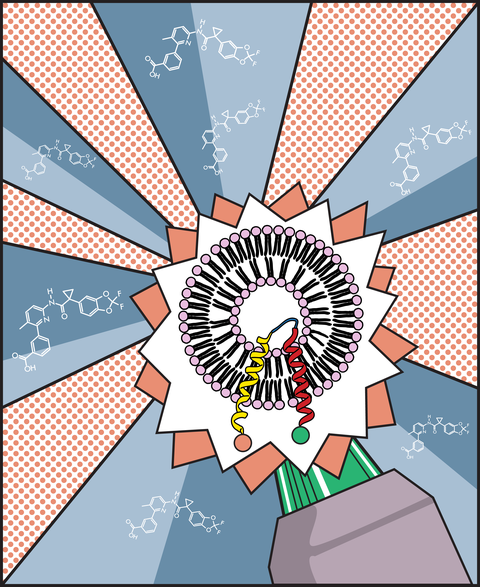(Membrane) Protein folding
Biogenesis of Outer Membrane Proteins
In Gram-negative bacteria, the transport of the beta-barrel outer membrane proteins (OMPs) through the periplasmic space and their subsequent insertion into the membrane is a complex process. It involves a set of elaborate protein-protein interactions between chaperones, beta-barrel assembly machine complex, and OMPs. We monitor these proteins in vitro using smFRET technique and in vivo through single-molecule localization. Besides the growing fundamental interest in such challenging biological systems, the structural, molecular, and biophysical insights obtained here are valuable for drug targeting.
Team members on the project: Neharika, Anna
Membrane protein folding and insertion
Membrane proteins are key players in the functioning of cells. They are located at the interface between the inside and outside of cells and compartments. Precise folding and occupation of the accurate tertiary structure within the membrane is crucial for their correct functioning and can be considerably influenced by the surrounding lipid composition. Their hydrophobic nature and the often complex lipidic environment creates technical challenges to study folding and insertion processes. We develop methods to study folding and unfolding of membrane proteins in lipid environments using single-molecule FRET. In particular we aim to characterize the transition path times and insertion mechanisms of the bacterial α-helical membrane protein Mistic into detergent micelles.
Team members on the project: Simon, Andreas
Structural effects of pathogenic CFTR mutations and their interaction with small molecule drugs
Membrane proteins, such as the cystic fibrosis transmembrane conductance regulator (CFTR), play a significant role in human physiology as they fulfill vital metabolic tasks. However, mutations in their encoding genes may cause dysfunction - in the case of CFTR, which serves as an ATP-gated anion channel, more than 2000 mutations are known to date, which may manifest in the eponymous genetic disorder cystic fibrosis. Many of these mutations introduce a non-native amino acid residue in CFTR's primary structure, which can lead to misfolding or loss of function of CFTR and thus ultimately to disease. We focus on the folding of short CFTR transmembrane segments in membrane-mimetic environments, such as large unilamellar vesicles. By applying biophysical techniques, such as single-molecule FRET, we intend to disentangle the folding behavior of CFTR mutants and study their rescue or interaction with small molecule drugs in a screening assay.
Team members on the project: Mathias
Molecular mechanism of EEA1 entropic collapse
Within the endocytic pathway of mammalian cells, specific intracellular membrane-bound compartments establish a dynamic network that facilitates biochemical processes such as biomolecule internalization, degradation and receptor recycling. To ensure directed and selective sorting of organelle content, the involved endocytic membrane-enclosed compartments undergo tethering and membrane fusion processes, molecular details of which have not been fully understand to date. Early endosomal autoantigen 1 (EEA1) is a homodimeric approximately 220nm long coiled-coil protein with terminal binding domains that has been shown to act as a tether for homotypic early endosome fusion as well as heterotypic clathrin-coated vesicle fusion to early endosomes. the goal of this research project is to gain insight into the molecular mechanism of the entropic collapse, which is the result of a sudden increase in flexibility of the previously extended central coiled-coil. In terms of the endocytic trafficking, the most significant consequence of this event is a marked decrease of the end-to-end length of the protein, an essential step towards lowering the spatial distance of early endosomes for subsequent membrane fusion. To monitor the conformational changes EEA1 will be probed by using single-molecule Förster resonance energy transfer (smFRET) and diffraction-based tracking of a tethered particle motion (TPM).
Team members on the project: Karl

